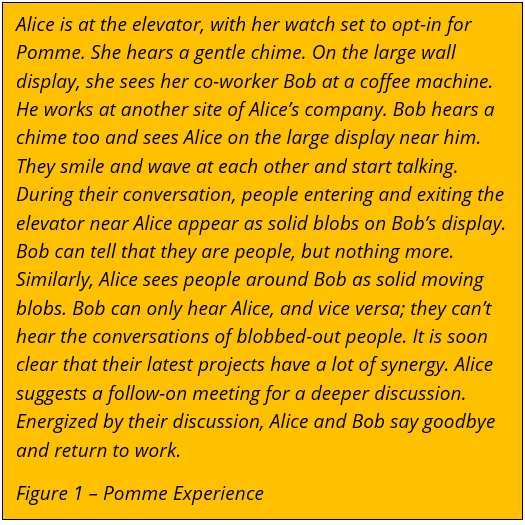
Nudging the Planets to Align
 Serendipity – that whimsical word conjures for me images of chance meetings between the protagonists in Hollywood romantic comedies. But, chance meetings among co-workers can also trigger serendipity – “the faculty or phenomenon of finding valuable or agreeable things not sought for”. Sometimes those valuable things are career opportunities, friendships, or just interesting water cooler conversations. Sometimes, though, they are innovative ideas for new products or solutions to business problems. Our pandemic-forced two-plus year isolation from the office dampened the serendipity of chance hallway and cafeteria conversations. And, we’re not going back to the way things were; workplace changes that allowed people long overdue flexibility over their time and place are here to stay. The virtual office was dreamt of long before it became the harsh reality of a deadly disease. People aren’t going to give up this new reality willingly. There’s even some evidence that the upside of our new remote practices substantially outweighs the value of chance physical workplace encounters.
Serendipity – that whimsical word conjures for me images of chance meetings between the protagonists in Hollywood romantic comedies. But, chance meetings among co-workers can also trigger serendipity – “the faculty or phenomenon of finding valuable or agreeable things not sought for”. Sometimes those valuable things are career opportunities, friendships, or just interesting water cooler conversations. Sometimes, though, they are innovative ideas for new products or solutions to business problems. Our pandemic-forced two-plus year isolation from the office dampened the serendipity of chance hallway and cafeteria conversations. And, we’re not going back to the way things were; workplace changes that allowed people long overdue flexibility over their time and place are here to stay. The virtual office was dreamt of long before it became the harsh reality of a deadly disease. People aren’t going to give up this new reality willingly. There’s even some evidence that the upside of our new remote practices substantially outweighs the value of chance physical workplace encounters.
At the Living Edge Lab, we’d like to have the benefits of both remote working and serendipity and believe that technology could enable this. Our recent concept paper, Balancing Privacy and Serendipity in Cyberspace, with Nigel Davies of Lancaster University and Nina Taft of Google, from this year’s HotMobile Conference explores technology approaches to bringing serendipitous chance encounters to the virtual workplace. Our question: “Can we create technology-mediated serendipity for coworkers who are not collocated?” The specific use case we examine is generating chance encounters between coworkers who are at different physical workplaces other than at-home. The envisioned service, Pomme, uses computer vision, video conferencing, edge computing, privacy mediation, and other technologies to enable the experience described in Figure 1.

Building on previous work on media spaces going back to the 1980’s, the paper describes how Pomme might be implemented and how the significant and obvious privacy challenges might be addressed. It touches on some novel social ramifications, e.g., “e-snubbing”, that arise in this new paradigm.
Of course, this use case isn’t the only way to enable better collaboration in remote work. We anticipate much research and innovation in this area over the coming years as technology and social norms adjust to the new reality. We hope that the Living Edge Lab can meaningfully contribute to this future. For more information, take a look at the Balancing Privacy and Serendipity in Cyberspace.
REFERENCES:
Satyanarayanan, Mahadev, Nigel Davies, and Nina Taft. "Balancing privacy and serendipity in cyberspace." Proceedings of the 23rd Annual International Workshop on Mobile Computing Systems and Applications. 2022.